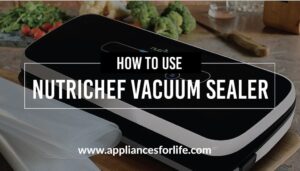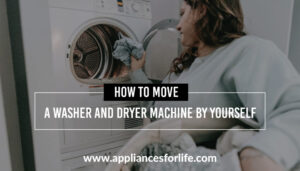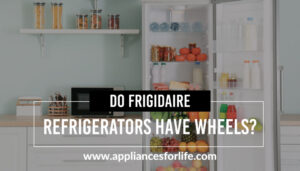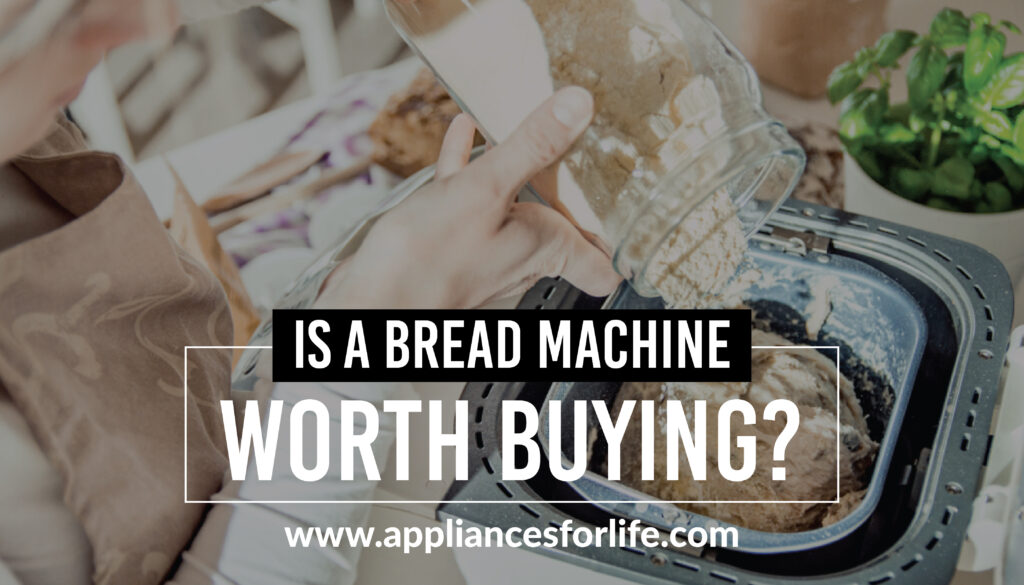- You might be thinking that bread-making machines are relatively a recent innovation developed about a decade ago. Well, You will be correct to an extent because most bread makers became popular about a decade or two ago. However, mechanical bread making machines have been around since at least the early 20th century.
- But the reason the recent bread makers are more popular is because bread lovers needed some control and convenience in the process of making their bread. Buying a bread maker comes with a lot of benefits, if you are wondering whether it is worth it. You can decide however you may want it to taste since you make it yourself. This article explores other benefits of a bread maker and provides some insights on its uses.
Why You Need a Bread Maker
Asking yourself or the people around you if a bread machine is worth buying is indeed a valid thing to do. There is nothing more shrewd and noble than trying to understand the outcome of a venture before entering into it. Now, if you are already wondering whether or not you need a bread machine, we have come to help you reach an informed decision by providing you with the necessary features of a bread maker and hoping that the features will convince you to opt. for it without any second thoughts.
Table of Contents
ToggleIf you are a bread lover or an individual who does bread-making for a merchandise, you need to know first and foremost that bread makers help you make perfect loaves of fluffy bread without any trouble. While it gives you the best, it also saves time and some cost.-A bread maker is indeed worth it. A breadmaker may only make one loaf at a time, but once it is set, it perfectly mixes, kneads, and proofs the bread at the proper temperature for the exact length of time it needs.
Some argue that baking bread in the oven is fun, producing delicious results but you definitely do need a lot of time and energy to make that happen. Most people that use ovens even run into problems trying to get their bread to come out perfectly. Proofing can be especially tricky and when it’s not done properly, the bread will come out dense and hard. And this is the reason why a bread machine is highly recommended. Especially if you bake on a regular basis and you are trying to save time and money.
Cost Efficiency
Bread makers are found to be relatively energy efficient. On the other hand, baking in an oven will cost you quite a lot. Hence, you can save a lot of energy cost by opting for a bread maker. And when it comes to the cost of production, bread machines call for simple and inexpensive ingredients like yeast, flour, sugar and water. These are stuff you will ordinarily find in your kitchen, hence, supplies for bread-making are indeed not an issue when it comes to making the bread in a bread machine. Now you see, a bread maker is one of the best kitchen appliances you can buy.
Time and Effort
A bread machine takes an average of 2 to 4 hours to fully make a loaf of bread, however this time frame also depends largely on the type of bread that is being made. A bigger advantage is that a bread machine does all this bread-making automatically in which case you are afforded the opportunity to engage in other tasks while your loaf is being baked. When our time is valuable and/or limited, a bread maker can actually save us a ton of time and energy. Plus, we still get fresh warm bread right out of the machine once it is done.
In actual fact, you can make 3 loaves of bread per day in a bread machine and you will not have to bother about mixing or kneading it properly. This is because the machine does it all for you. All you need to do is pop the ingredients in and you are good to go.
Cleanup
A bread maker affords you absolute ease in cleaning. This is so because there is only little cleanup to do. You simply have to wash the pan and you are good. A bread maker is one of the things you can put in a dishwasher. It’s easy to simply toss the bread maker pieces in the dishwasher or wipe them down by hand and put them back. No more dusting myself from head to toe in excess flour.
Healthier Option
I wouldn’t know if this ever happens to you but very often, I wonder if that snack or the food I eat has been processed properly, in a healthy way. When you make your bread at home, using your own resources and of course your bread maker, you have absolute control over how it turns out. Hence, you do not need to worry about how it has been prepared or whether it is healthy or not. any of the store-bought breads contain high-fructose corn syrup and other fillers and additives that you just don’t need in homemade bread- choose healthy living today!
Bread Maker Features
Bread pan
It is impossible to bake bread without a bread pan. A bread pan is useful for determining the shape a bread is meant to take. Bread is a finished product, while the kneaded flour is its raw form. This raw form is to be contained in a container similar to a box in order for it to be baked accordingly and this is why a bread pan is needed. A bread pan contains a kneading paddle and a rotating shaft that drives the paddle. A bread pan also features a handle to lift the pan out of the bread maker. You can use plastic, rather than metal, utensils on the non-stick surface and wash the pan by hand.
Cool Wall
Bread makers have insulated outer walls, just like microwave ovens. Insulated outer walls are necessary to trap heap within the bread maker. It will be completely anti-ergonomic to get burned when you place your hand on a bread maker while it works. Hence, an insulated wall is placed on the outside of the machine to keep it cool on the outside. Nonetheless, these walls do get warm occasionally, and this is a common trend with bread makers made with stainless steel outer body.
Kneading Paddle
This may sound cliche but, to make the perfect bread, you will need the perfect ingredient mixture. Furthermore, instrumental to achieving a perfect mix is a perfect tool, fit for the task. The bread maker kneading the paddle mixes the ingredients in the bread pan and kneads them into dough. Bread makers have varying types of kneading paddles. Some bread makers have twin paddles which create a more rectangular-shaped loaf while other bread makers have an almost square-shaped pan.
And note that, to get your bread pan thoroughly clean, you need to remove the kneading paddle to get rid of the baked bread that may accumulate beneath it, which could affect the efficiency of the bread maker. If the kneading paddle is difficult to remove, fill the bread pan with warm, soapy water to let it soak.
Control Panel
The control panel of a bread maker is where you manipulate its settings. It is possible to achieve a particular loaf size, type of flour to be used and even a shade crust color with a series of tweaks on your control panel. On your control panel, you will find a menu that affords you all the settings you need to achieve your desired loaf result.
Bread makers that are tricky to use and it is important to understand how its varying functions operate. Also, It’s key that you put the right amounts of ingredients into your bread, so a machine that makes bread making is confusing and complicated will not only frustrate you, but potentially ruin your bread.
Delay Setting
A delay option found in most bread makers comes in handy especially when you wish to get up early to bake fresh bread. Most bread makers come with a 13-hour delay option. This includes the time taken to complete the bread cycle, so it’s more of a countdown timer.
Set your bread maker before you go to bed and wake up to delicious freshly baked bread the next morning.
Automatic dispenser
If you’re a fan of making bread with added ingredients, such as fruit or nuts, consider a bread maker with an automatic dispenser. The bread maker will cost more, but will mean you don’t have to wait around to add ingredients manually.
How a Bread Machine Works
Understanding the workings of a bread machine can help utilize all its functions and further produce tasty and delicious loafs. Below are some stages explaining how a bread maker works.
The Preheat stage. Here, the ingredients are warmed so that the yeast can perform the way it should, no movement occurs at this point
The Knead Stage: A bread maker starts kneading really slowly by distributing the yeast applied to your flour. It further moistens the gluten in the flour, then the kneading paddle gets to work to form the dough ball. It does this by turning the flour slowly, then faster and faster.
Rise: At this stage, the dough ball is left to expand until it fills the bread pan and eventually takes the shape of the pan. The kneading paddle still works in this stage but only slowly and for a few seconds. This stage is also known as the ‘punch down’ and it is necessary for the release of trapped carbon dioxide
The Baking: This is basically when baking occurs. Immediately after baking, bread makers keep a warm phase for up to 60 minutes but, after that, the loaf will become soggy if it’s left in the pan inside the machine.
When you add your ingredients and you discover that you need more, you can add more ingredients while your baking is on. As soon as you add other ingredients like nuts, fruits, chocolate chips, or seeds, the machine beeps to indicate that a new addition has been made. When this whole process is eventually done, you can then unplug the bread maker and remove the bread from the pan, let it cool on a rack for 30 minutes and fill your kitchen with the smell of homemade bread, and that’s it.
How to Use a Bread Maker to make Bread
Starting from the basics, it is important to understand the need to get your ingredients right. The specific flavor or feature you want in your bread will determine the ingredients that you add to your flour. If the plan is to make a bread with raisins, you know that you definitely need to add some and this process goes for other ingredients too.
Despite the fact that your ingredients vary depending on the different types of bread you are making, however, a regular loaf needs the following ingredients: flour, water, sugar, salt and yeast. You may even get a sourdough starter instead of yeast. Some recipes will advise adding sugar, which, in addition to making the bread a little sweet, helps the yeast to rise better. Others also suggest adding a little oil, such as olive or vegetable oil. This helps the dough form, preventing it from sticking to the sides of the pan, and makes the bread more tender. However, you can make good bread without sugar or oil.
Begin by reading the instructions on your bread machine. After you must have added the necessary ingredients and done the necessary mixing you can then proceed to studying the instructions and settings on your machine. However, one thing you must never do is overfill the bread maker because apart from the fact that it could develop faults after a while and create a big mess. Bread makers come in several different sizes and are typically distinguished by the weight of the loaf they can handle, from 1 to 2 pounds or larger.
On your machine’s instructions, you will find the proportions and measurements for a basic loaf or other types of loafs you intend to make. The need to measure your ingredients as accurately as possible cannot be overemphasized because the ingredients you use will significantly determine the taste and texture of your bread. Too much water, and your dough will fail to rise—or will rise and then collapse, creating a crater. Too little water, and the bread will be tough.
The temperature of your water is also a crucial consideration to make. The water you use needs to be warm for your yeast to be activated and for the dough to rise appropriately. The ideal range of hotness should be between 105 degrees and 110 degrees. it cannot be too hot either or the yeast will die.
After you get comfortable with a basic dough, you can start experimenting! Try using different kinds of flours, such as whole wheat or rye. Add nuts, dried fruit, or even olives.
FAQs
What order do you put ingredients in a bread machine?
It depends. Some instructions tell you to put wet ingredients in first, followed by dry ingredients. Others suggest you put the flour in, followed by salt and sugar, then wet ingredients, and finally the yeast. Almost all recipes will suggest you add the yeast last, otherwise, the dough won’t rise quite as well. For best results, start by following a recipe that comes with your machine, once you have the hang of that, start experimenting!
What makes a bread maker work?
A bread maker is an electric oven- pretty compact!. Generally, it holds a single bread pan and this itself is large enough, just in case you are worried about capacity. Regardless, there are various bread maker sizes in the market. The pan has an axle at the bottom and the axle is connected to an electric motor from below. There is a small metal paddle on the axle which is inside the tin and has a waterproof seal. This ensures that the bread mixture does not escape from the bread maker.
A bread maker is an electric oven that is compact. It can generally hold a single bread pan which will be reasonably large. There are a variety of sizes that are available in the market.
The pan has an interesting design. It has an axle at the bottom. This axle is connected with an electric motor from below. There is a small metal paddle on the axle which is inside the tin and has a waterproof seal. This ensures that the bread mixture does not escape from the bread maker.
So, for a bread maker to work efficiently, you need to put the paddle in the bread pan and remove it from the bread maker. Mix and add your ingredients into the tin. Put the bread pan in your bread maker. Then you need to select the program that you need via the electronic control panel.
15 MINUTES
ESTIMATED TIME DESIGNING AND UPLOADING THIS ARTICLE
08 HOURS
ESTIMATED TIME RESEARCHING AND WRITING THIS ARTICLE
You Might Also Like

How to Use NutriChef Vacuum Sealer?
Over the years, food preservation seemed to be a great problem as there were no sufficient methods to go about that efficiently. A lot of people even conceded to losing their food items without giving much of a fight because there was little or nothing

How to Remove Grease from Stainless Steel Appliances?
It is not a surprise that at least one stainless steel appliance or item can now be found in every home; that’s how popular the material is. Demands have skyrocketed over the years and these precious appliances need to be protected at all cost because

How to Lift a Washing Machine (5 Best Tips)
Lifting a washing machine is as easy as a sunday morning. As long as you know what to do. The average washing machine weighs between 150 pounds (68kgs) and 200 pounds (90kgs). The time for moving your washer and dryer has come. Moving a washer

Portable Air Conditioner alternatives you need right away
Portable Air conditioners are appliances that are essential and must-haves. With this review, you will be provided with all the details you need to know about the cooling system and to enable you to make the best decision. It is quite difficult to select the

Samsung vs LG Refrigerator Reviews
Samsung refrigerator vs LG refrigerator; Samsung appliances vs LG appliances; comparisons between these two brands have become broader over the years. Undoubtedly, these are two of the biggest appliance brands in the world, and they’ve both enjoyed massive successes. In this article, we’ll be reviewing

How Refrigerator Wheels Guarantee Mobility and Balance for Frigidaire Refrigerators
Frigidaire fridges are known for their aesthetic design and quality. Not only do they offer features powered by modern and fascinating technologies, they are also built to stand the test of time. Some Frigidaire Fridges, like many other refrigerator are built with wheels for balance

How to Install a Navien Tankless Water Heater?
Tankless water heaters have gained tremendous popularity in recent years due to their energy efficiency, space-saving design, and the luxury of having an endless hot water supply on demand. If you’re tired of running out of hot water or dealing with bulky traditional water heaters,

How to Clean Out A Whirlpool Dishwasher?
Whirlpool dishwashers are not hard to clean if you have the right techniques. In this article, we’ll be looking at how to clean out a Whirlpool dishwasher, which is very important if you want to get it to last long. Everyone loves comfort and convenience

How Does A Gas Tankless Water Heater Work
A gas tankless water heater is a great option for homeowners who want to save space and money. These units are much smaller than traditional water heaters and don’t use a tank to store hot water. Instead, they heat water on demand, which means you

Dangers and Benefits Of Leaving Baseboard Heaters On All Day
The necessity of a heating system is usually not appreciated until summer is up; although, individuals who live in relatively colder environments will have a slightly different opinion. A heating system- any heating system at all is greatly cherished during winter- More importantly, a heating

